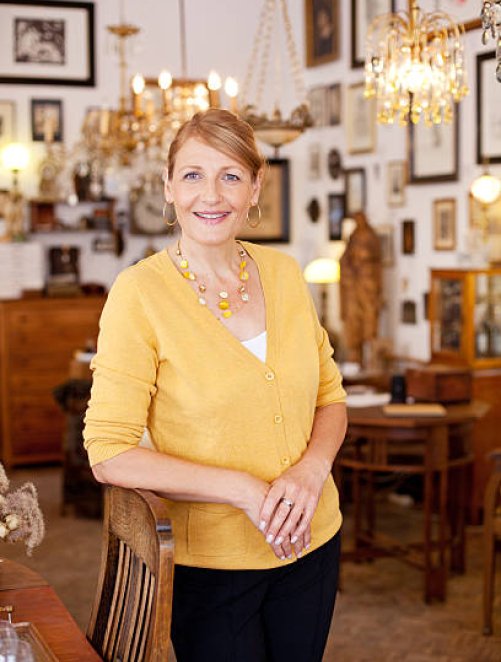














Self portrait by Soga Shohaku in scroll fashion
Ink or watercolor has been placed on a cloth type backing of gold design with small flowers and swirls. Attached on each end with a plastic tube of that time. Wrapped in a Japanese newspaper of the day given to great grand father Grimmesey. Placed in a Tomobako box with a tag on the end 179. In the box is also a business card with a Thank You note and other side the company my great grandfather came to help from the United States ( East Coast). We were told the self portrait was probably placed on the newer (1920-30) background and scrolls changed because it was illegal to have this artwork when my grandfather left Japan. Not knowing what he had. As far as I know not really displayed except when I was a young girl. It hung by our furnace. Maybe 8-10 years. We moved and it went back in to the box.
I really don’t know. I have enclosed a picture with one of my brothers and I standing with it. I am 5’1”
Inherited
Yes


Hello, this item is a Japanese hanging scroll painting attributed as a self-portrait of Soga Shohaku (1730–1781), mounted on a textile backing with gold floral design and wrapped in a Japanese newspaper from around 1920–1930. It is housed in a tomobako (custom wooden box) labeled with tag number 179. The provenance details indicate it was acquired by the client’s grandfather during a stay in Japan and subsequently brought to the United States, with the scroll possibly re-mounted or altered due to legal restrictions on exporting cultural property at the time.
Authentic works by Soga Shohaku, an eccentric Edo period painter known for bold ink brushwork and unconventional themes, are considered rare and highly valuable. However, based on the documented alterations, mixed provenance, and mounting in a more recent style, this piece is likely a 20th-century reproduction or homage rather than an original Edo-period artifact. Comparable decorative or academic reproductions attributed in this manner generally range in value from $1,500 to $4,000 USD.
Thank you, Shelley, and I completely understand your hope for more clarity. The business card and note appear to be in Japanese, and while I can’t provide a full certified translation from the image alone, the card likely includes the name and affiliation of the person who gifted or authenticated the piece—possibly a curator or dealer. The newspaper text is indeed Japanese and does not seem to mention an imperial era directly, but if there’s a date, it would often appear in the format of a reign year (e.g., 昭和 for Shōwa). Unfortunately, the quality of the image makes it difficult to definitively extract names or dates. If you’d like a precise reading, I would suggest showing the documents to a native speaker or using a Japanese OCR translator app for clearer character recognition.










Hello David U.
Thank you for the honest appraisal of our family heirloom. I do have a couple questions. I kind of hope the appraisal would tell us some information only since we don't speak Japanese. Can you tell us what the business card says? Were you able to spell the last name of the note on the opposite side? I guess the only other real question is, is there a date in the newspaper? I heard it goes by the emperor or something like that.
We will probably not sell but pass it onto a granddaughter later.
Sincerely,
Shelley